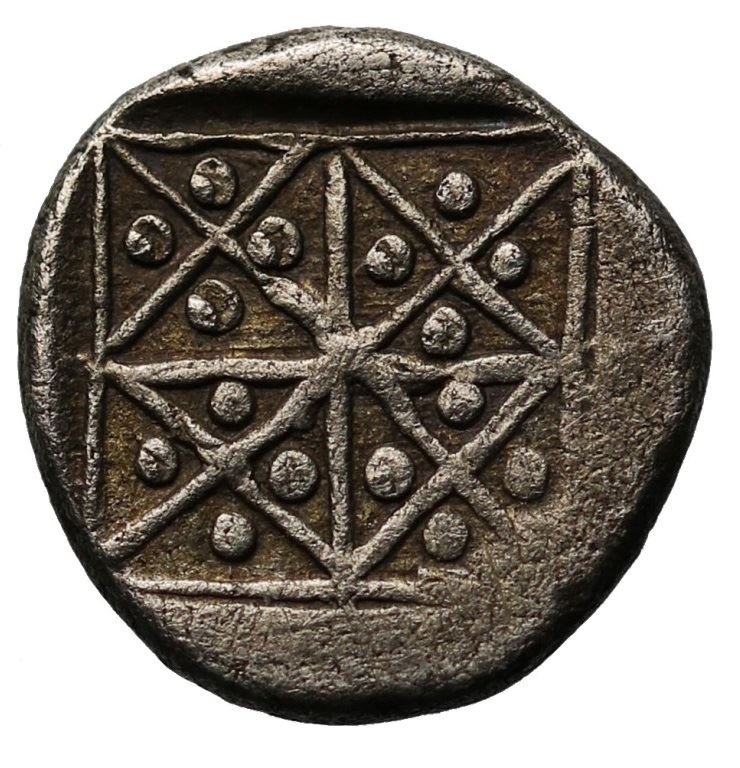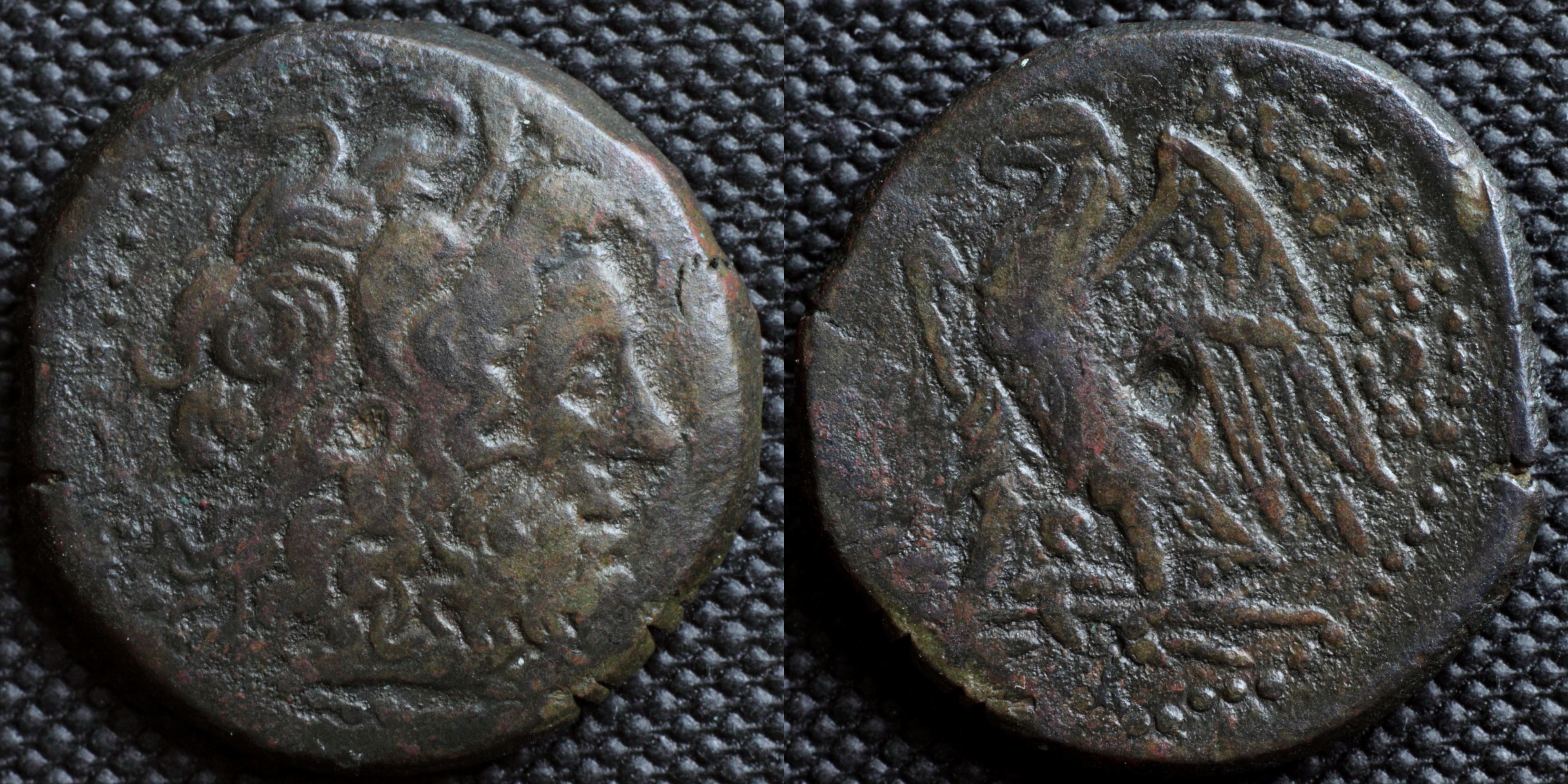An ancient Greek silver coin denomination with a value of 1/2 obol, or 1/12 drachm. Generally it weighs around 0,36 grams.
In Ptolemaic egypt, it was also struck in bronze.
In Ptolemaic egypt, it was also struck in bronze.

(1)
Ptolemy II

An
AE
Hemiobol
struck 264-256 BC
in
Alexandria
Obverse: head of Zeus-Ammon right with tainia
Reverse: eagle with spread wings standing on lightning; ΠΤΟΛEMAIOY ΒΑΣΙΛΕΩΣ, Θ between eagle's legs
Diameter:
18.5 mm
Die Orientation: -
Weight: 5.14 g
Die Orientation: -
Weight: 5.14 g
No notes for this coin
Svoronos, 469
(2)
Ptolemy II
_REDUCED(5).jpg)
Obverse: Horned head of deified Alexander right, wearing mitra, with long, flowing hair
Reverse: ΠΤΟΛΕΜΑΙΟΥ ΒΑΣΙΛΕΩΣ, eagle standing left on thunderbolt with wings spread; Π above club to left
Diameter:
14 mm
Die Orientation: 12 H
Weight: 3.69 g
Die Orientation: 12 H
Weight: 3.69 g
Ex. Italo Vecchi Collection; Ex. Dix Noonan Webb Auction A13 (25.09.2012); Lot 3054; Ex. Stephen Alexander Collection
CPE B328; Svoronos 641; SNG Cop 481
(3)
Ptolemy III
_REDUCED(8).jpg)
Obverse: Diademed head of Zeus-Ammon right
Reverse: ΒΑΣΙΛΕΩΣ ΠΤΟΛΕΜΑΙΟΥ, eagle with closed wings standing left on thunderbolt, harpē to left
Diameter:
19 mm
Die Orientation: 11 H
Weight: 4 g
Die Orientation: 11 H
Weight: 4 g
The mintmark to the left of the eagle on this rare bronze hemiobol of Ptolemy III is a harpē; a type of ancient Greek sword which had a sickle protrusion along one edge near the tip of the blade. Lorber explains that these coins were assigned to Ioppe by Svoronos because the harpē was the weapon of Perseus, who according to myth rescued Andromeda in the harbour of Ioppe. A fun, if slightly irrelevant fact; Ioppe is an ancient port city in Israel that is also known as ‘Jaffa’ and later became famous for it’s delicious oranges. It’s also the name of my cat.
CPE B473; SNG Copenhagen 465 (Ptolemy II)
